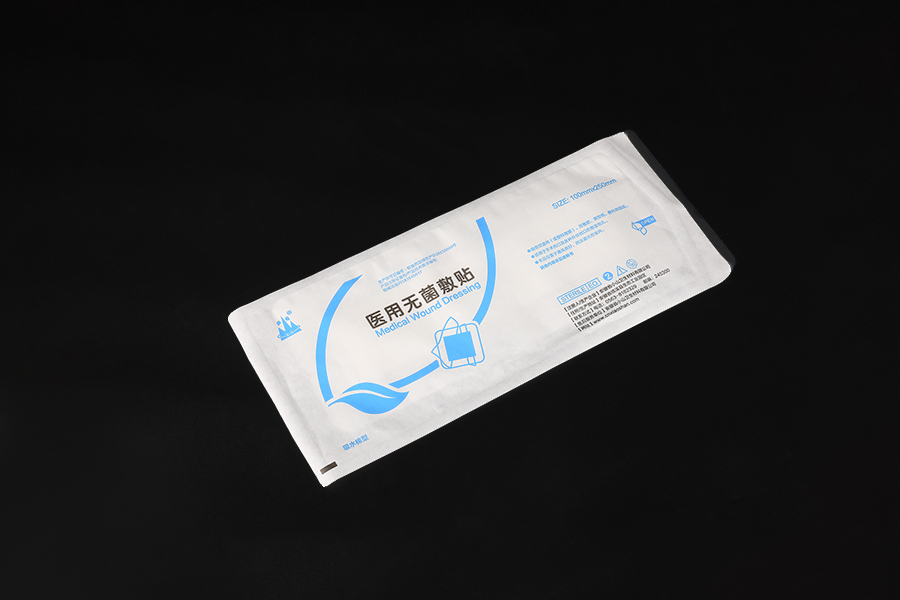The composition of the adhesive in non-woven wound dressings plays a crucial role in both skin adhesion and wound healing properties. The adhesive needs to balance effective adhesion to the skin while promoting an optimal environment for healing. Here's how the composition influences these factors:
1. Adhesion to Skin
The adhesive in non-woven adhesive wound dressings must provide strong yet gentle adhesion to ensure the dressing stays in place without causing discomfort or damaging the skin upon removal. Key factors influencing adhesion include:
Type of Adhesive:
Acrylic-based adhesives: These provide strong adhesion and are less likely to cause irritation, making them ideal for sensitive skin areas.
Rubber-based adhesives: These are more flexible and can offer high adhesion but may be more prone to causing irritation over time.
Silicone-based adhesives: These offer gentler adhesion and are commonly used for patients with delicate or sensitive skin, such as the elderly or those with fragile skin.
Cohesion vs. Adhesion: The adhesive needs to be cohesive enough to stick to the dressing material, but also adhesive enough to stay in place on the skin. This prevents it from peeling off prematurely or causing unnecessary trauma when removed.
Peel Force: The adhesive should provide a moderate peel force—strong enough to prevent the dressing from falling off, but low enough to allow easy, pain-free removal without causing skin damage or discomfort.
Elasticity and Flexibility: The adhesive should be flexible, allowing the dressing to conform to the shape of the body and move with it. This is especially important in areas where skin stretching and movement occur frequently, such as joints.
2. Impact on Wound Healing
The adhesive composition also affects the wound healing environment, influencing factors such as moisture retention, infection prevention, and the overall comfort of the dressing. Here's how it plays a role:
Maintaining Moisture Balance: Adhesives that do not block moisture vapor transmission help in maintaining the ideal moist wound healing environment. This prevents the wound from drying out or becoming too moist, which can both slow healing or lead to maceration.
Breathability: Some adhesives are designed to allow the wound to "breathe" while still maintaining adhesion. This ensures that there is adequate air exchange to prevent excessive moisture buildup, which could encourage bacterial growth.
Wound Protection: The adhesive layer provides a barrier to external contaminants (e.g., bacteria, dirt, and viruses), which helps reduce the risk of infection. Silicone-based adhesives, in particular, are less likely to trap bacteria compared to harsher adhesive types.

Minimizing Pain on Removal: Some adhesives, like silicone-based ones, are designed for atraumatic removal. This is particularly beneficial for patients with chronic wounds or sensitive skin, as it reduces the risk of causing further tissue damage or pain during dressing changes.
Non-Toxic and Hypoallergenic Properties: Adhesives in wound dressings are often formulated to be hypoallergenic and free of irritating chemicals (like latex or certain fragrances). This ensures that the skin is not sensitized, which could impair healing. For example, patients with skin allergies may tolerate certain silicone-based adhesives better than acrylic adhesives.
3. Support for Healing Processes
Reduced Risk of Trauma: The adhesive must be formulated to prevent the dressing from sticking to the wound bed. If the adhesive is too strong or the dressing is removed improperly, it can disturb the wound and disrupt healing. Non-adherent adhesives help to keep the dressing in place while avoiding direct contact with the wound itself, reducing the risk of trauma during dressing changes.
Encouraging Natural Healing: The right adhesive can help keep the dressing in place, ensuring the wound remains undisturbed. It also promotes faster healing by preventing contamination, regulating moisture, and ensuring that the wound remains in a protected environment, which accelerates tissue regeneration and cell migration.
4. Prevention of Skin Damage
Minimizing Irritation: The adhesive needs to be non-irritating to the skin, particularly around the edges of the dressing. Strong adhesives may cause redness, maceration, or even skin breakdown, especially when removed frequently. Silicone adhesives, in particular, are known for their low irritation profile and suitability for extended wear.
Gentle Adhesion: A gentle adhesive minimizes the risk of skin trauma during removal, which is especially important in patients with fragile or sensitive skin. By using a non-aggressive adhesive, the skin remains intact, promoting better healing and reducing the risk of pressure ulcers or irritation.

 English
English 中文简体
中文简体








